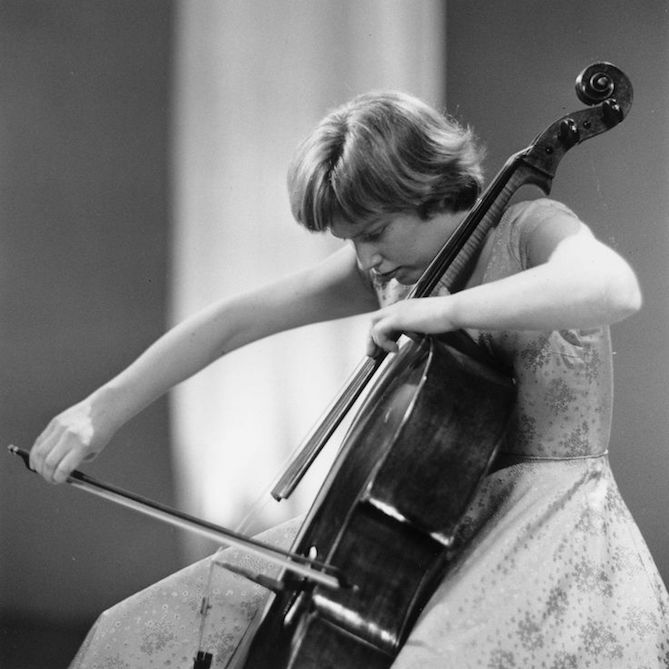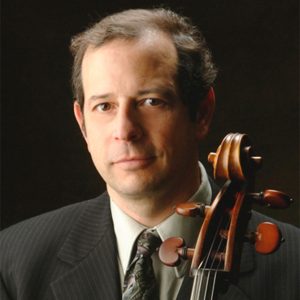
Being the Music
Thomas Rosenberg
What is it that makes one performance more compelling to an audience than another? Of course, there are many things that come into play, not the least of which is the aesthetic taste of individual audience members. However, at most concerts the audience consensus is clear. When it seems dull or not played at a high technical level, they are polite; when it seems good, they are appreciative; and when it seems great, they are compelled to give energy back to the performers by clapping energetically and often standing and cheering.
I believe there are usually two primary factors that create those compelling performances that audiences and performers enjoy so much. Both involve artistry, but different kinds. And, in the setting of a chamber music concert, the chances of NOT succeeding are greater than in a solo performance. On the other hand, when successfully attained, there is something extra special about a great chamber music performance where different performers meld together their distinct personalities!
The first type of artistry involved is great technique. Is it in tune? Is it clean? Is the sound beautiful and compelling? This exceptional technical artistry is harder for a chamber music group to achieve because not just one person, but every member of the group needs to excel at the technical mastery of their instrument and their individual part. Then, above and beyond that, all of the varied technical issues of ensemble playing have to be successfully worked out. These include group intonation, matching of articulations, matching vibratos and bow speeds in the string instruments, precise and accurate rhythm, knowing how to balance each part so the primary voice is always heard, but the supporting voices remain significant, taking time or pushing against the pulse together in the same way, and a variety of other issues. In student ensembles, the often less than complete technical mastery of the individual instrumentalists compels the group and the individual members to be focusing on the technical aspects of their playing. There is nothing wrong or unusual about that, yet it also causes a disproportional amount of practice and rehearsal time to technical issues.
For some audiences (and performers), if the group achieves all of the things involved in a great technical performance, it is enough. They will love it! But there is a whole additional level of artistry that is even more hard to achieve, and is much less quantifiable. It is a phenomenon I call “Being The Music”. When combined with great technical artistry, memorable and moving performances are created. These are the types of performances that make live performances so special, and will keep audiences returning to concert halls to hear live performances. In my opinion, there is no reason that young performers (including pre-college) should not be pushed to learn how to do this. It is where great artistry, whether by an individual or from a group, is achieved and communicated to the audience.
“Being The Music” is both a complex and very simple concept. In simplest terms, it means letting the music flow in you and show in you to the audience. In some ways, it is like acting in the theatre. There are the obvious things involved in acting such as knowing lines, blocking and how to physically behave on stage as per instructions from the director. But that is not enough to be compelling to the audience. An actor needs to seem to be the actual character they are portraying, and there are various acting methods that can be employed to do this. The same is true in music. Every member of a chamber music group that gives a great performance must be able to successfully convey to the audience that they feel the character of the music….both the music in their individual part and how their part relates to the music that is going on in the parts around them. Also in acting, young performers, or performers with weak technique often seem stiff, unnatural and unconvincing on stage. The same is also true in the music world.
There are numerous ways to work on this aspect of musicianship with students. First, it is important that each player have a concept of what they think the character of the music might be. In a coaching, a good first step can be to directly ask that question. Once a character or mood is defined, the trick is getting that to be conveyed to the audience. I believe that body language is a very important part of that process. Certainly, a lot of music is only heard, as in typical recordings, on the radio, etc. In those situations, the listener cannot see the body language. Yet, I believe that without body language, it is very difficult for the artist to convey the mood and energy of the music even in those situations where the listener does not see the performer. It will directly impact speed and amplitude of vibrato, type of articulation, contact point used, speed and weight of the bow, etc!
There are many things that go into the body language that gives the audience the sense that the performer is “Being The Music.” Probably the most important of these is how one breathes and gives cues. Of course everyone is breathing while they play. But breathing musically is an art form in itself. How one prepares to play is as important as the actual playing. In orchestra, many of the gestures a conductor gives conveys the character they are trying to evoke from the players. In chamber music, those physical gestures serve the same purpose. Not only do they convey the character to the audience, but will fill that performer and the other members of the group with an almost indefinable type of energy. Other aspects that breathing and moving can affect are the shape of the line, the freedom or resistance to the pulse, the speed of the pulse and how many beats are being felt per measure. Often, body language will chop up the line. It is often good to encourage the body language to show the big beats (for example maybe just the down beats?) and not all of the beats. It is a great idea to also encourage students to imagine the piece without the bar lines, so that longer phrases can be easier to attain.
One last very important concept for string players: bowings are not phrasings! Too often, a bowing will cause poor phrasing or bumps at the bow changes. Great care at the bow changes needs to be emphasized. Be sure students are aware that the bow speed should be the same when doing a phrasing that includes a bow change as it would be without that bow change. A good way to work on this is to play the phrase under one long bow, even it means the wrong color is achieved. Listen to how the bow speed is used between the notes that will have the bow change. Another means is to have the student sing the phrase and feel the airflow they use during the phrase. Then do the planned bowing and listen to see if it creates the shape of the phrase as conceived, or wrong but convenient!
One great way to work on breathing, cueing, and moving musically is to have students play a passage from the piece with out actually playing. In other words, pantomime playing or “air chamber music”. This really forces them to tune in to each other for communication, cueing, passing the line, matching vibratos and bow speeds, and breathing together and in the same way. This can also improve individual breathing that prepares one to play in a way that compliments or fits into, or conversely pulls attention away from the other lines going on concurrently.
Another useful tool is video. One need not go to a live concert anymore to see what great artistry looks like. There are many excellent videos of current and past great artists that can be watched on YouTube and other websites. Often, there are great performances of the piece your students may be working on. As good as these are, they still can not recreate the special energy of seeing it live as part of an audience. Another great use of video is to video the group, then have them watch and critique themselves with the sound off. They will often be surprised at how dull or stiff they appear compared to what they will admit they like. Challenge them to assign a character by what they observe. Have them verbalize what it is that works or does not work. Give them a week or two, then video them again to compare how they are doing.
It takes time, trial and error, and the development of personal taste. But the goal both from the perspective of the audience and from the performer is to get to that wonderful place where one is “Being the Music.”
Subjects: Chamber Music
Tags: cellobello, CelloBlog, chamber music, thomas rosenberg
